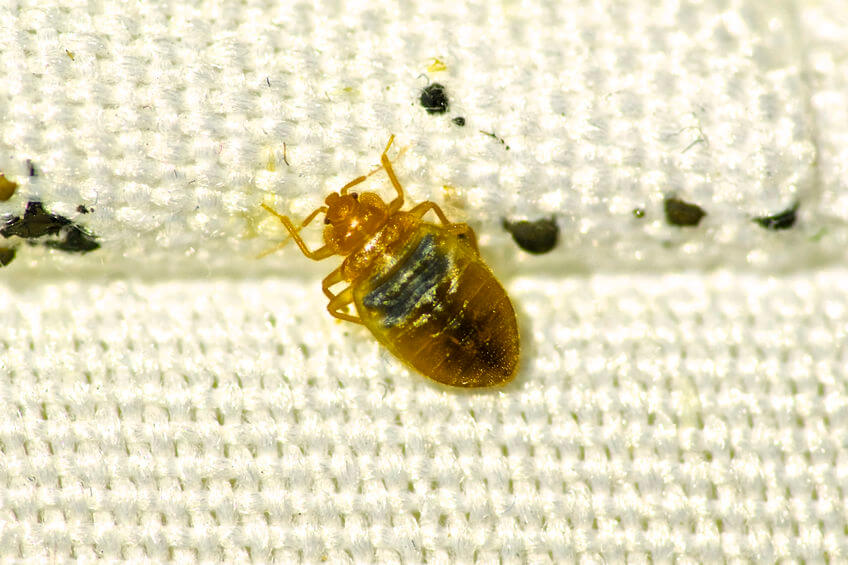Your Best Exterminator in Philly for Philadelphia Bed Bugs: Trustworthy Providers
Your Best Exterminator in Philly for Philadelphia Bed Bugs: Trustworthy Providers
Blog Article
The Scientific Research of Pest Control: Comprehending the Biology of Common Family Vermin
In the world of bug control, an extensive understanding of the biological intricacies of usual household insects offers as the foundation of effective management methods. Join us as we decipher the clinical foundations of parasite control and discover the remarkable globe that exists within our homes.
Value of Insect Biology
The understanding of pest biology is critical for reliable insect control techniques in residential setups. By delving right into the biology of typical home pests, people can acquire beneficial understandings into their actions, life cycles, and environments. This understanding is important for creating targeted and lasting bug monitoring approaches that minimize the usage of harmful chemicals and decrease environmental effect.
Pest biology incorporates different factors that affect parasite infestations, consisting of reproductive prices, preferred food sources, and survival devices. Understanding the breeding patterns of bugs such as mosquitoes or roaches can aid property owners carry out preventive steps to interrupt their life cycles and lower populaces. Similarly, understanding the foraging actions of rodents or ants can help in finding and removing their access indicate food resources within a household.

Life Cycles of Typical Parasites
Understanding the life cycles of typical bugs is essential for executing efficient parasite control measures in domestic atmospheres. The life process of a parasite describes the stages it goes through from birth to their adult years and consists of egg, larva, pupa, and grown-up phases. Recognizing these phases aids in identifying the most weak spots in the insect's life cycle for targeted control techniques.
For circumstances, typical home insects like cockroaches have an insufficient metamorphosis, progressing from egg to fairy to grownup. In contrast, pests like insects go through a complete metamorphosis with egg, larva, pupa, and grown-up stages.
Behavior Patterns of House Insects
An extensive analysis of family bugs reveals detailed habits patterns that play an important role in recognizing bug control techniques. Household pests exhibit numerous habits patterns that contribute to their survival and capability to prosper in human environments. Comprehending these patterns is vital for effective bug management.
One usual behavior amongst home pests is their attraction to food resources. Insects such as ants, roaches, and pantry bugs are drawn to food deposits, crumbs, and spills. By recognizing and eliminating these food resources, homeowners can interrupt the insects' foraging patterns and minimize problems.

In addition, numerous house bugs show social habits, living in groups or swarms. Comprehending the social characteristics of insects like ants or termites is important for effectively removing whole nests instead of just individual pests. By comprehending the habits patterns of household bugs, parasite control professionals can develop targeted and efficient methods to manage invasions properly.
Reproduction Techniques in Parasites
Pests have evolved numerous approaches to ensure the extension of their varieties and the effective emigration of new atmospheres. One common technique is rapid reproduction, where parasites have brief pregnancy periods and produce large numbers of spawn (philly exterminator philadelphia pa bed bugs).
An additional vital element of pest recreation is the growth of resistance to manage measures. Parasites can adapt to chemicals and various other obliteration approaches with mechanisms like behavioral adjustments and genetic mutations. This capacity to develop quickly postures a considerable challenge for parasite control initiatives, requiring consistent development in monitoring methods.

Effect of Biology on Pest Control
The organic attributes of insects play an important role in forming the efficiency of pest control approaches. Comprehending the biology of common house bugs is vital for developing effective pest monitoring techniques (philly exterminator philadelphia pa bed bugs). Elements such as the life-span of an insect, its reproductive price, chosen environments, and feeding behaviors all influence the selection of control steps
For instance, bugs with quick reproductive rates, such as cockroaches or specific types of ants, might need extra hostile and continual control efforts to stop population spikes. Likewise, insects that have developed resistance to specific chemicals will require the use of alternate control techniques to successfully take care of problems.
Furthermore, the biology of insects also impacts the timing and regularity of control applications. Some parasites are extra energetic during particular times of the year or under particular ecological problems, needing targeted interventions during these durations to attain ideal results.
Verdict
To conclude, recognizing the biology of usual house bugs is vital in efficient insect control. By knowing their life process, habits patterns, and reproduction strategies, we can create targeted and effective methods to take care of and remove these insects. By considering the organic elements of pests, we can apply much more sustainable and lasting options that minimize the influence of insects on our homes and environments.
In the realm of parasite control, a profound understanding of the organic complexities of common house bugs serves as the keystone of efficient management approaches.The understanding of bug biology is check that important for effective parasite control techniques in domestic setups.Comprehending the life cycles of typical bugs is important for applying effective bug control measures in property settings.The biological attributes of parasites play a vital role in shaping the efficiency of parasite control methods.In final thought, recognizing the biology of common home bugs is crucial in effective bug control.
Report this page